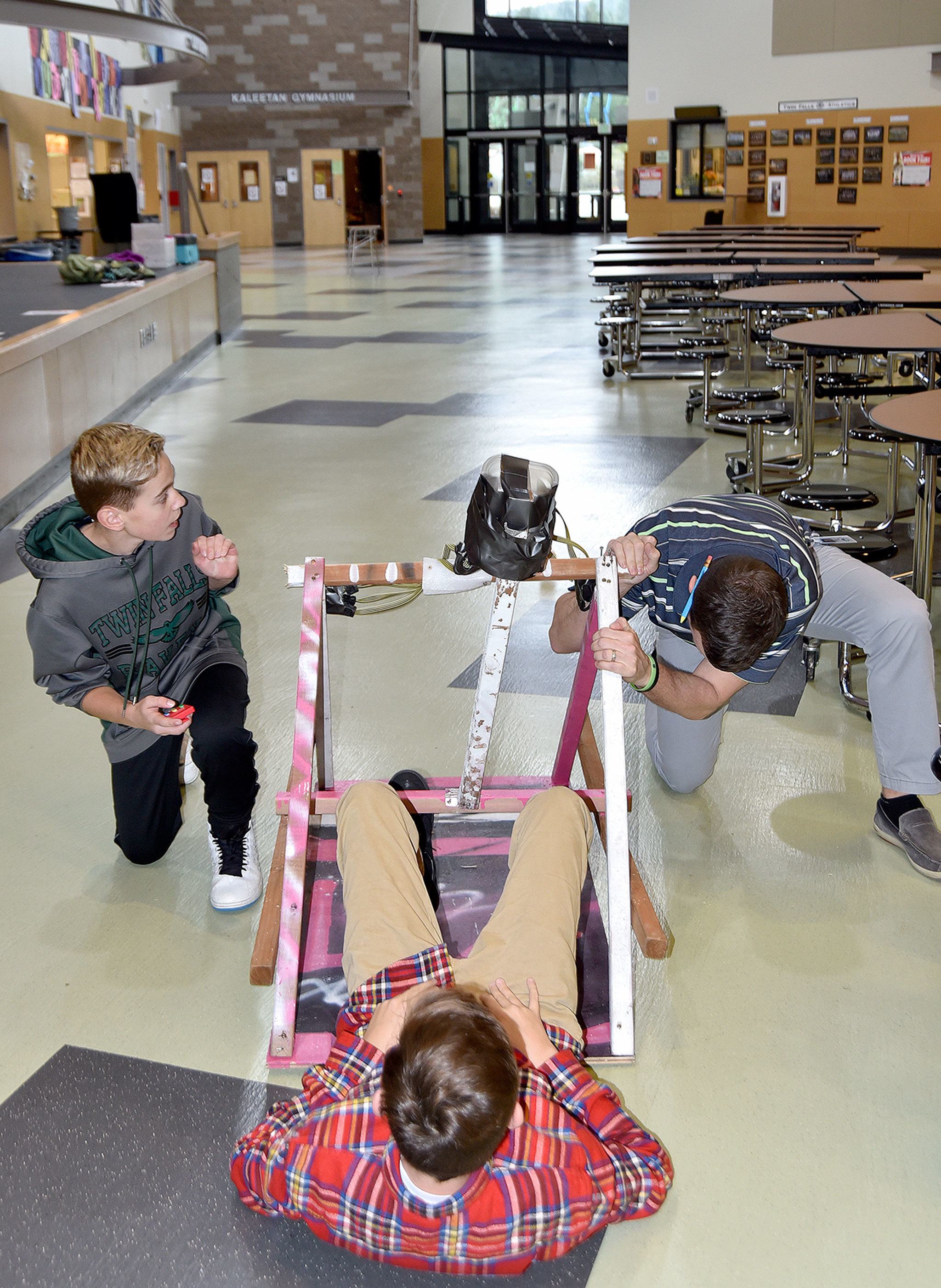Hang time was definitely the more difficult goal for students working on catapult projects at Twin Falls Middle School last week.
As two girls, their mechanism centered on the measuring tape stretched onto the floor, watched their launched beanbag shoot straight up, not forward, they groaned. When another classmate said “you guys should go for distance,” they just sighed.
It was just the right challenge for Evan Symington, though.
“It’s harder, and a lot of people wanted to do distance, so I felt like being the oddball, and I wanted to do hang time,” she explained.
The device she and her partner Audrey Hofmann made with a lacrosse stick, bungee cords and ingenuity in their science class, was performing well, and defeating most challengers on the last day of testing, Wednesday at Twin Falls.
The challenges were the final element of the unit, after students did all the design, engineering, construction and testing together in class.
This is a national standard of engineering curriculum, said their science teacher Kyle Wallace, who teaches the annual catapult unit in conjunction with Nancy Kinsella-Johnson.
“They were given time to research what designs would be best for their goals,” before they started on blueprints, he said.
After research and design came construction, reserved for Fridays, and made extra challenging since students couldn’t have parent help in this phase, except in cutting pieces of wood for the final assembly. A few catapults collapsed during testing, and then it was up to the students to innovate on repairs to their devices.
“It’s pretty fun to watch the kids using power tools at this stage,” said Wallace. “The learning has been happening in so many areas, teamwork, communication, safety using the tools, timelines.”
One bit of learning that got around quickly was in how to load the catapult. This year’s projectile, a beanbag, flew best in both hang time and distance tests, if part of it was draped over the edge of the throwing arm. Carson Netu and Luke Hunter, with one of the most powerful catapults in the distance competition, confirmed that when Wallace asked them to try launching last year’s projectile, a soft ball. After both throws, it took them very little time to puzzle out that the bean bag drape gave it an advantage over the perfectly round ball. By the next class, most catapults were being loaded with the drape technique, demonstrating the power of the scientific method.
Students at Chief Kanim Middle School were also working on catapults in their science classes this year. Their testing begins this week and Wallace is hoping that the two schools will ultimately have a catapult competition.



